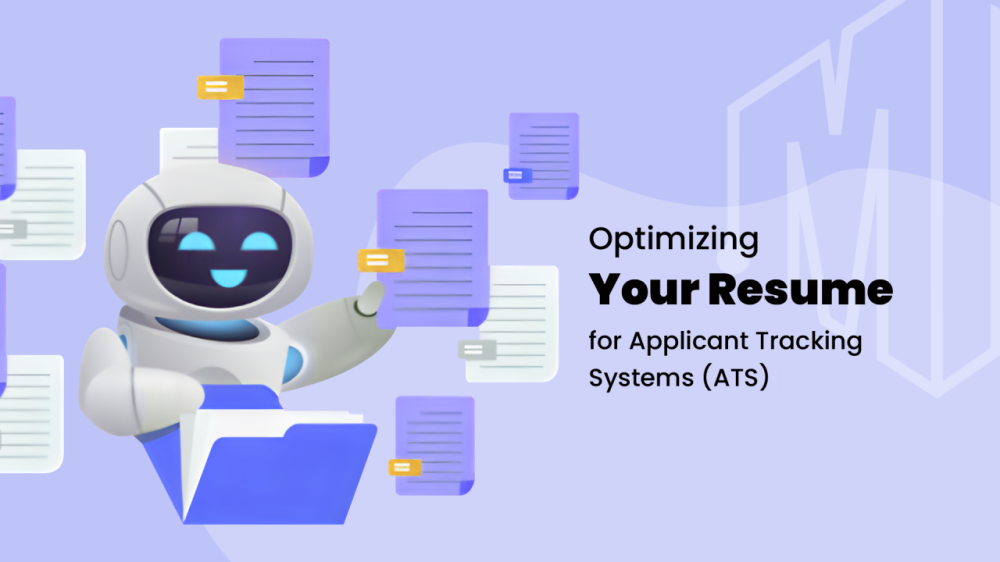
In today’s competitive job market, learning how to optimize your resume for applicant tracking systems is essential, Applicant tracking systems (ATS) are designed to streamline the recruitment process, but they can also filter out resumes that aren’t tailored for them, If you don’t know how to ensure your resume aligns with ATS requirements, you might lose opportunities to candidates with less experience but better-optimized resumes.
What Are ATS and How to Optimize Your Resume for Applicant Tracking Systems?
- Applicant tracking systems (ATS) are software tools used by employers to manage job applications efficiently.
- These systems, also referred to as ATS tracking systems, scan resumes for keywords, qualifications, and formatting.
- Most companies rely on ATS tracking systems to filter through applications and identify the best candidates.
- Failing to optimize your resume for an ATS tracking system means your resume might not even be seen by a human recruiter.
- By understanding how these systems work, you can create an ATS-friendly resume that stands out.

Why Optimizing Your Resume for ATS Matters
- Optimizing your resume for applicant tracking systems is no longer optional. Many companies use applicant tracking systems atss to streamline hiring.
- These systems evaluate resumes based on relevance to the job description.
- By learning to optimize your resume for applicant tracking systems, you increase your chances of moving forward in the hiring process.
You Can Read: skills in curriculum vitae
Steps to Optimize Your Resume for Applicant Tracking Systems
1. Use an ATS-Friendly Format
The first step in optimizing your resume for ATS tracking systems is to use a format that ATS software can easily read, Complex layouts can confuse recruiting applicant tracking system tools, so keep your format simple and clear:
- Use standard fonts like Arial or Calibri.
- Save your file in .docx or PDF format.
- Avoid images, tables, and headers that might interfere with the parsing process of a recruiting applicant tracking system.
You also can read: Resume Templates That Pass ATS
2. Include Relevant Keywords
One of the most important steps in learning how to optimize your resume for recruiting applicant tracking system software is using the right keywords, These systems scan resumes for job-specific terms, so make sure to:
- Identify keywords from the job description.
- Integrate them naturally throughout your resume.
- Focus on skills, tools, and qualifications mentioned in the posting.
For example, if the job requires “project management” or “data analysis,” include these phrases in your experience and skills sections.
You read also: Build Resume from LinkedIn with These Effective Strategies
3. Customize Your Resume for Each Job
- Generic resumes don’t perform well in recruiting applicant tracking system tools.
- Tailor your resume for each job application by incorporating the exact phrases used in the job description.
- This simple step can improve your chances of passing through a recruiting applicant tracking system and being noticed by recruiters.
4. Quantify Your Achievements
Recruiters and applicant tracking systems atss value measurable accomplishments, To ensure you optimize your resume for applicant tracking systems, use numbers and percentages to showcase your impact, For example:
- Increased revenue by 25% within one year, demonstrating alignment with company goals.
- Reduced operational costs by 15% through process improvements that highlight measurable success.
Quantifying your achievements is a critical step to optimize your resume for applicant tracking systems and ensure it ranks highly in ATS evaluations.
You can read: Exceptional Barrister CV Example Showcase Your Legal Expertise
5. Organize Your Resume with Clear Headings
To effectively optimize your resume for applicant tracking systems, structure your resume with clear and standard headings that ATS software can easily interpret. Use headings such as:
- Professional Experience
- Education
- Skills
Clear organization improves readability and increases the likelihood that your resume passes through applicant tracking systems atss successfully.
Applicant tracking systems (ATS) scan for these sections to understand your qualifications. Consistency and clarity are key when aiming to optimize your resume for applicant tracking systems.

Common Mistakes to Avoid
1. Overloading Keywords: While keywords are crucial to optimize your resume for applicant tracking systems, overstuffing them can make your resume appear unnatural. Instead, integrate them seamlessly.
2. Using Complex Designs: Creative designs might look attractive but can confuse applicant tracking systems atss. To ensure you optimize your resume for applicant tracking systems, avoid using charts, graphics, or fancy fonts.
Keeping your resume simple and clean improves its compatibility with ATS tools.
3. Ignoring Customization: Submitting a generic resume significantly reduces your chances of passing through candidate tracking systems, Always tailor your application to the job description to optimize your resume for applicant tracking systems, This ensures that your resume aligns with the keywords and criteria specific to each role.
To succeed in the hiring process, ensure your Job Description and Resume Match perfectly.
An Example of an ATS-Optimized Resume
John Doe
Email: [email protected] | Phone: 123-456-7890 | LinkedIn: linkedin.com/in/johndoe
Professional Experience
Digital Marketing Manager
XYZ Corporation | 2020–Present
- Increased website traffic by 40% through SEO optimization.
- Managed a $100,000 annual budget, improving ROI by 20%.
- Implemented CRM tools, enhancing client retention by 25%.
Skills
- SEO Optimization
- CRM Tools
- Data Analytics
Education
- B.S. in Marketing | ABC University | 2016
- This format is tailored to optimize your resume for applicant tracking systems. By focusing on relevant keywords and clear organization.
- it ensures compatibility with applicant tracking systems atss, helping your application rank higher.
- Adopting this approach is a proven method to effectively optimize your resume for applicant tracking systems.
Future Trends in Applicant Tracking Systems
- With advancements in technology, recruiting applicant tracking systems are becoming more sophisticated.
- Modern applicant tracking systems atss can now analyze context and phrasing in addition to keywords.
- Staying updated about these trends is crucial to continuously optimize your resume for applicant tracking systems and maintain a competitive edge
Learning to optimize your resume for applicant tracking systems is a critical step in today’s job search, By following an ATS-friendly format, incorporating relevant keywords, and tailoring your application to each job, you can increase your chances of passing ATS tracking systems, Understanding and adapting to applicant tracking systems atss is the key to securing your next job opportunity.

